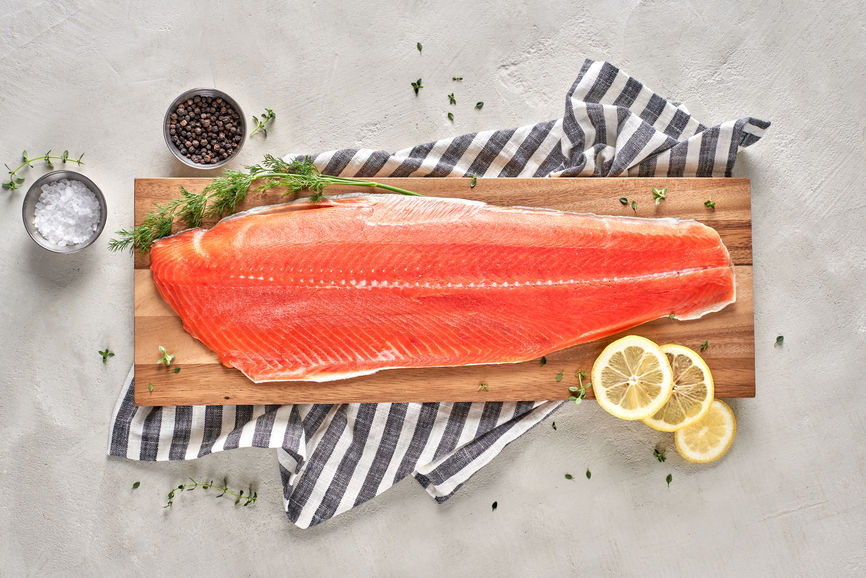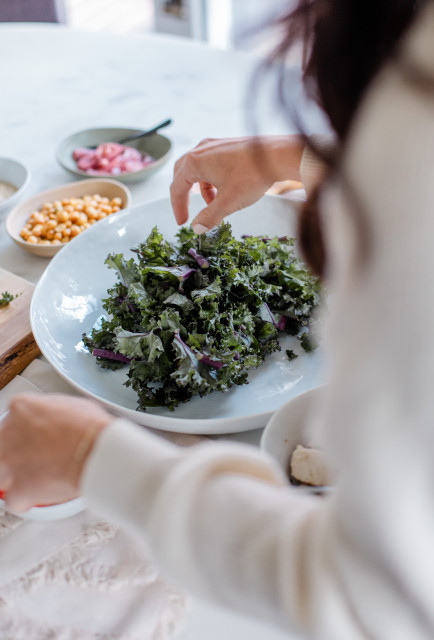
Your Ultimate Guide to Protein (How Much Do You Need?)
Protein. It’s a hot topic - one that can sometimes be controversial - and one that I often get a lot of questions around, specifically how much do I need? And what’s the best protein? The answers to these questions are dependent on several factors that are worth diving into.
Let’s start with why protein is important. Protein consists of amino acids—often referred to as the “building blocks” that form all of our cells, tissues, organs, as well as enzymes and hormones that help our cells communicate with each other. How our bodies transport oxygen and balance all of the fluids that keep us alive is also dependent on proteins. Protein even informs whether the body will absorb enough other essential nutrients, because proteins are integral to the digestion, absorption, and transportation of all nutrients after eating a meal. If you are not getting enough protein it can increase your risk of higher body fat, muscle wasting, poor sleep, blood sugar imbalances, imbalanced mood, weak/broken hair, and decreased immune function.
How Much Protein Do You Need?
Here’s part of the controversy surrounding protein– there are some leaders in the nutrition science space who argue for lower daily protein consumption to promote longevity. And on the other hand, others argue for an approach that is “the more protein, the better.” Diets that are excessively high in protein have also been associated with an increased risk of dehydration and the acceleration of kidney disease for those with damaged kidneys. Both extremes can sabotage you from achieving your health goals and supporting your health, metabolism and muscle mass.
Then there’s the general United States government guidelines for protein in adults. The Recommended Dietary Allowance (RDA) guidelines state that healthy adults need 0.8 gram of protein per kilogram of body weight. Based on this, if you weigh 150 lbs, that would translate to 55g of protein per day. But meeting this recommendation doesn’t represent an optimal intake that supports an active metabolism and lean body mass. Rather, it indicates the minimum protein needed to prevent malnutrition.
One randomized control trial divided participants into three groups: low protein (0.7g/kg), moderate protein (1.8g/kg), and high protein (3.0g/kg). All participants were fed a diet high in calories. The low protein group lost a small, insignificant amount of lean body mass whereas the high protein group increased lean body mass, despite eating too many calories.
As with everything, there is no “one size fits all” approach because individual needs vary based on your weight, physical activity, health goals/history, age and whether you are pregnant or not. Because protein is so beneficial, my team and I generally recommend a minimum of 1.2 grams of protein for every kilogram of body weight each day. Here’s how to quickly find out generally how much protein that would mean for you. First, calculate your weight in kilograms (divide your weight in pounds by 2.2). Then multiply that number by 1.2 for your baseline daily protein needs.
Here’s how this looks for someone who weighs 150-pounds:
150 pounds divided by 2.2 = 68 kilograms
68 kilograms x 1.2 grams (my protein recommendation) = 81.6 grams of protein daily
If you regularly exercise, some of the latest science indicates that getting closer to 1.4-2.0 grams of protein per kilogram of body weight increases fat loss and improves body composition. If you weigh 150 lbs, that would mean 95-136g of protein daily. If you are a healthy weight and want to build muscle OR if you are overweight and want to lose fat, the recommendation for protein is closer to 1.6-2.4g per kilogram of body weight.
Now if you’re thinking – whoa that’s a lot of protein, that can’t be right. Let me explain. Generally speaking most people do not consume enough protein daily. When this happens you’ll experience a decrease in lean body mass, which makes it easier to gain fat. As people age, losing lean body mass also increases your risk of getting bone fractures. It’s also harder to produce and maintain muscles as you age. Your body uses protein to predominately make muscle so one way to maintain our muscles as we get older is to consume enough protein.
Protein also helps slow down the absorption of sugar in your blood, preventing a blood sugar “high,” followed by a crash that leaves you feeling hungry. This is one of the reasons that meal plans with optimal protein are key for controlling your hunger and appetite. One study conducted at Tufts University found that pairing a source of carbohydrates with protein (white bread with tuna) led to a slower blood sugar rise compared to eating white bread alone or pairing the bread with additional fiber (oat cereal), fat (butter), or more carbohydrates (rice cereal).
Three Key Tips For Protein
1. Avoid eating low quality sources in order to lower inflammation and decrease risk of adverse health effects. This means two things: 1) cut back on processed animal meat and smoked meat and 2) choose quality protein sources. Processed meats like hot dogs, salami, pepperoni and sausage have been labeled as carcinogenic. They contain nitrates that have been associated with an increased risk of cancer. In addition to that, you want to choose quality sourced protein. When possible, prioritize wild salmon versus farm raised salmon, organic tofu versus GMO containing tofu, and organic chicken versus conventional chicken. If you choose quality sources of protein most of the time, you shouldn’t worry about an occasional farm raised salmon meal served at a restaurant.
2. Eat a variety of protein sources in order to meet all of your amino acids needs. That means, go outside of your comfort zone of chicken and turkey! Get in the habit of eating plant proteins too so that you don’t rely solely on animal sources for protein.
3. Do the best you can to evenly distribute your protein intake throughout the day instead of eating >60g in one sitting. It’s best to evenly spread out your daily protein intake at each of your meals.
How To Add More Protein To Your Diet
Here are six easy and delicious ways to add more protein to your diet:
1. Add protein powder to breakfast
My favorites include grass-fed beef protein powder by Be Well By Kelly. BWBK’s protein powder is an amazing source of essential and non-essential amino acids, branch chain amino acids and collagen specific amino acids. It uses minimal high quality ingredients and zero chemicals like hexane in the extraction process. If you are looking for a plant-based option, I also like: Truvani.
2. Incorporate nutritional yeast with any meal
Nutritional yeast is a pantry essential because it provides a convenient, shelf-stable source of plant-based protein and fiber. It has a whopping 5g of protein with 2g of fiber and only 1g of net carbohydrates per 2 Tbsp. You can add nutritional yeast on top of any salad, vegetables, beans, honestly, just about everything! It has a cheesy flavor profile, which is especially nice for anyone who is dairy free.
3. Reach for lupini beans for a snack or add them to a salad
Lupini beans are as close to a magical food as they come. One bag contains 21g of plant-based protein, in addition to being filled with 15g of fiber and 0g net carbs. That means it’s a great source of plant-based protein without the carbohydrate load. They are also rich in micronutrients like manganese, iron, and folate for a true nutritional powerhouse. They come in different flavors and you can easily throw a bag into your bag when traveling. These are also a huge hit with kids - they love them and are easy for mom and dad to pack in lunches.
4. Incorporate canned fish like sardines, anchovies, oysters, salmon
Canned fish are definitely not for everyone but if you are open to trying these out, they will serve you well! In addition to offering a rich source of protein and anti-inflammatory omega 3 fats, they are also easy to store, making them an optimal choice to keep in your pantry for weeks when you’re in a pinch. (True story, a friend of mine refers to my diet as an apocalyptic diet because my pantry is filled with canned fish, seeds, and other protein staples ?. The shelf life and convenience are unmatched!). Look for fish packed in olive oil or water– avoid canola oil at all costs! Here’s a video on how to make a delicious sardine salad (do not knock it until you try it!!).
5. Load up on seeds like chia seeds, pumpkin seeds, and hemp seeds
Seeds are another great, plant-based option to incorporate protein throughout the day. My go tos are chia seeds, pumpkin seeds and hemp seeds in smoothies, over salads and as snacks. One of my favorite quick lunch go-tos is a Chocolate Cherry Smoothie, which includes more than 30 grams of protein. Here’s the recipe: 2 tbsp coconut milk coffee creamer, 1 c water (or more as needed), 1 serving of Be Well By Kelly chocolate protein powder (20-25g protein), 1 c frozen cauliflower rice, ½ c frozen cherries, 1 tbsp almond butter and 1 tbsp hemp seeds. Bon appetit!
6. Eat eggs–with the yolks
Eggs have gotten a bad rap over the years because the government incorrectly vilified them for increasing cholesterol levels. Eggs do contain dietary cholesterol, about 275mg per egg but it turns out that dietary cholesterol does not directly increase levels of blood cholesterol like nutrition researchers once believed. The primary reason you would want to avoid eggs is if you have an allergy or sensitivity. But otherwise, they are a nutrient-packed source of protein. One egg has 7g of protein, in addition to choline, DHA, B vitamins, vitamin A, and vitamin D. Unlike vegetarian sources of protein, eggs are a complete protein that have all essential amino acids and a high bioavailability. Opt for pasture-raised eggs for a higher nutrient value.



